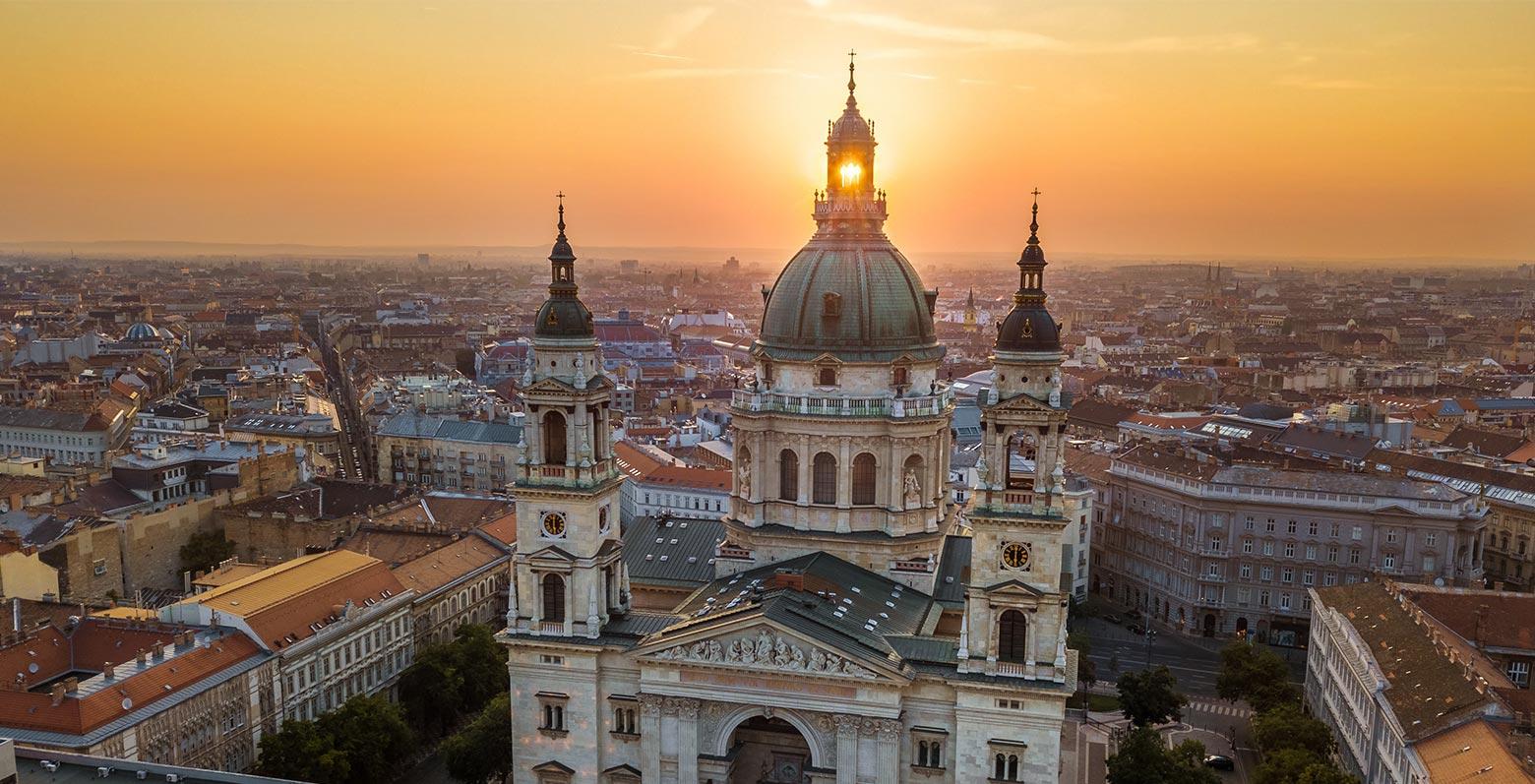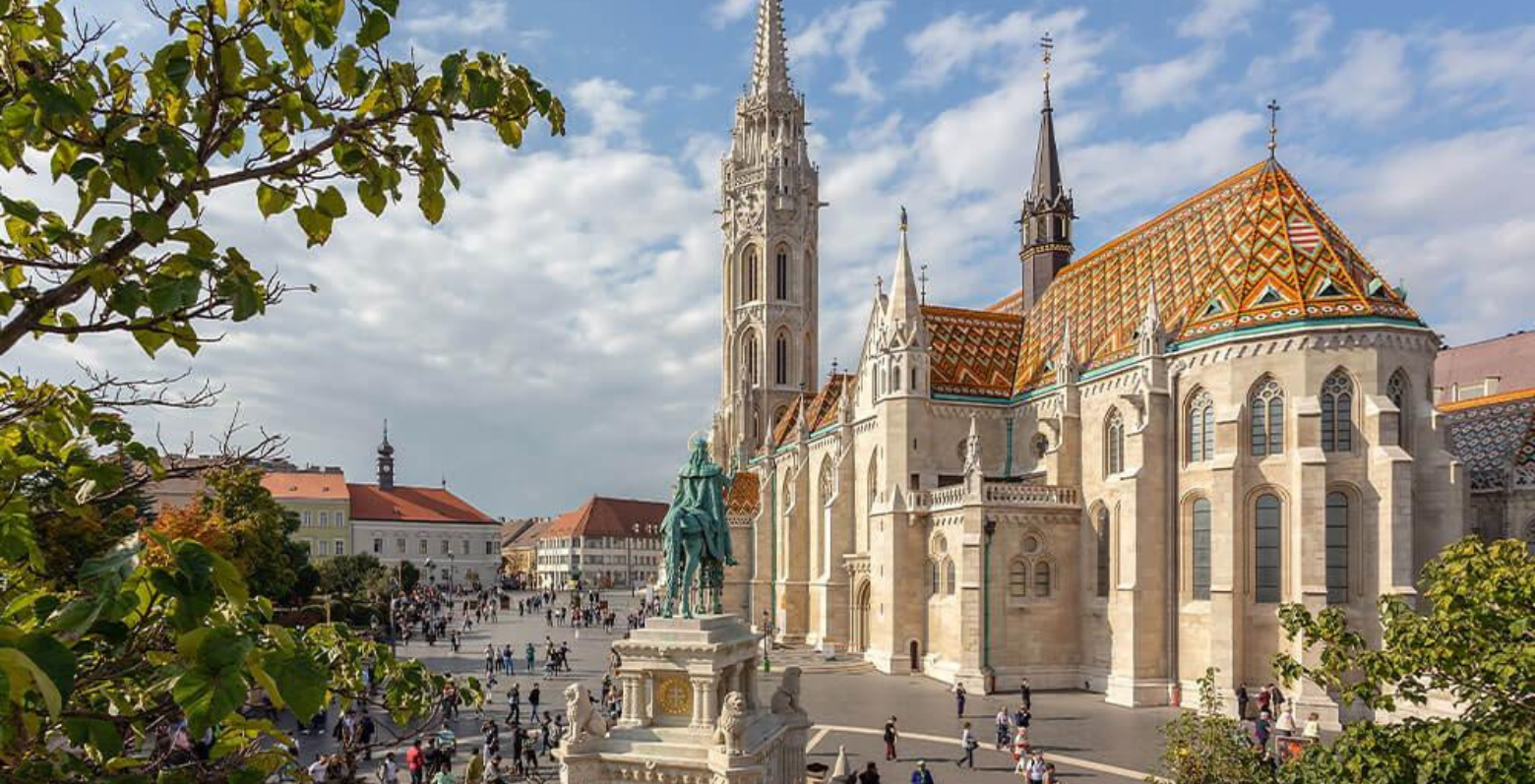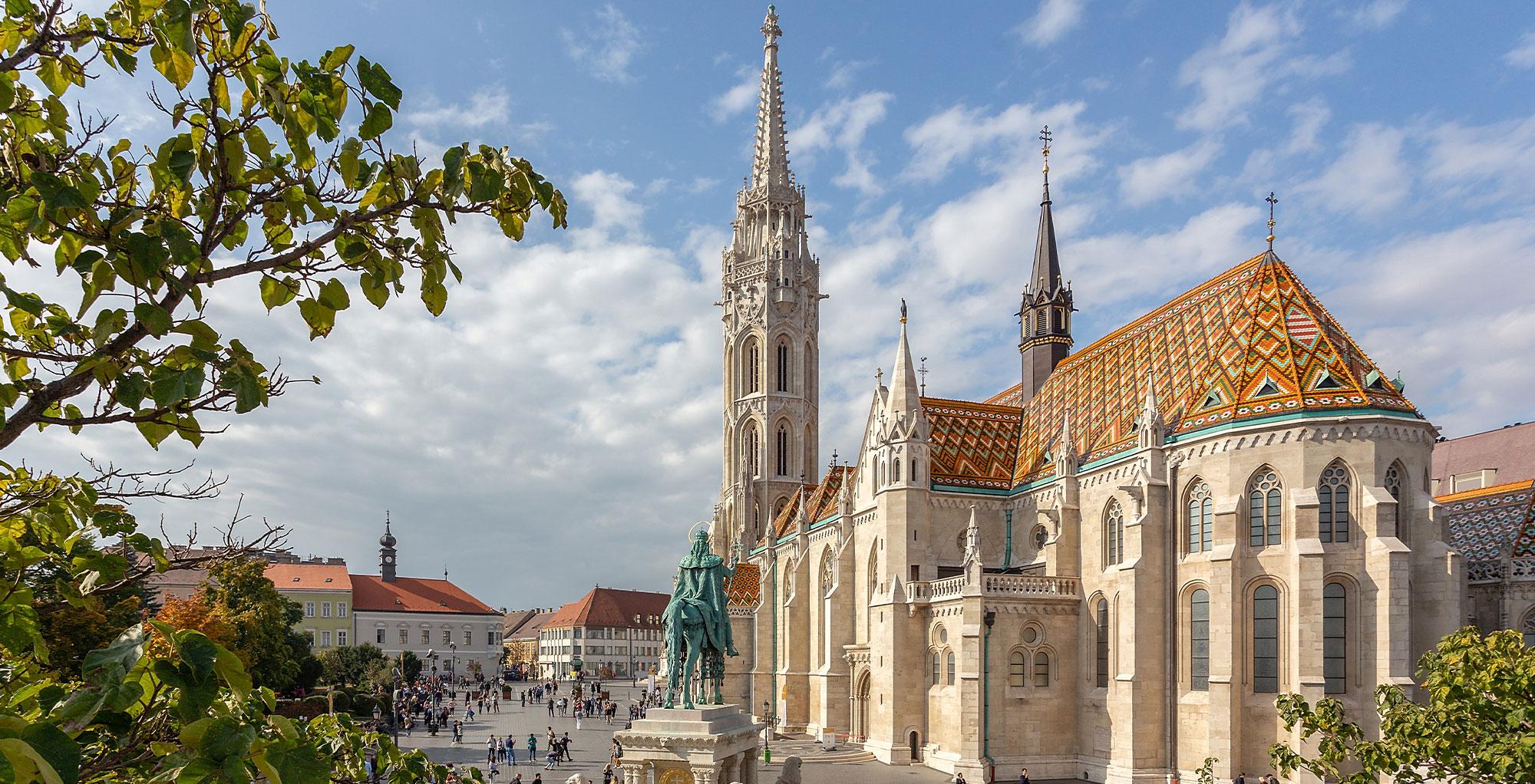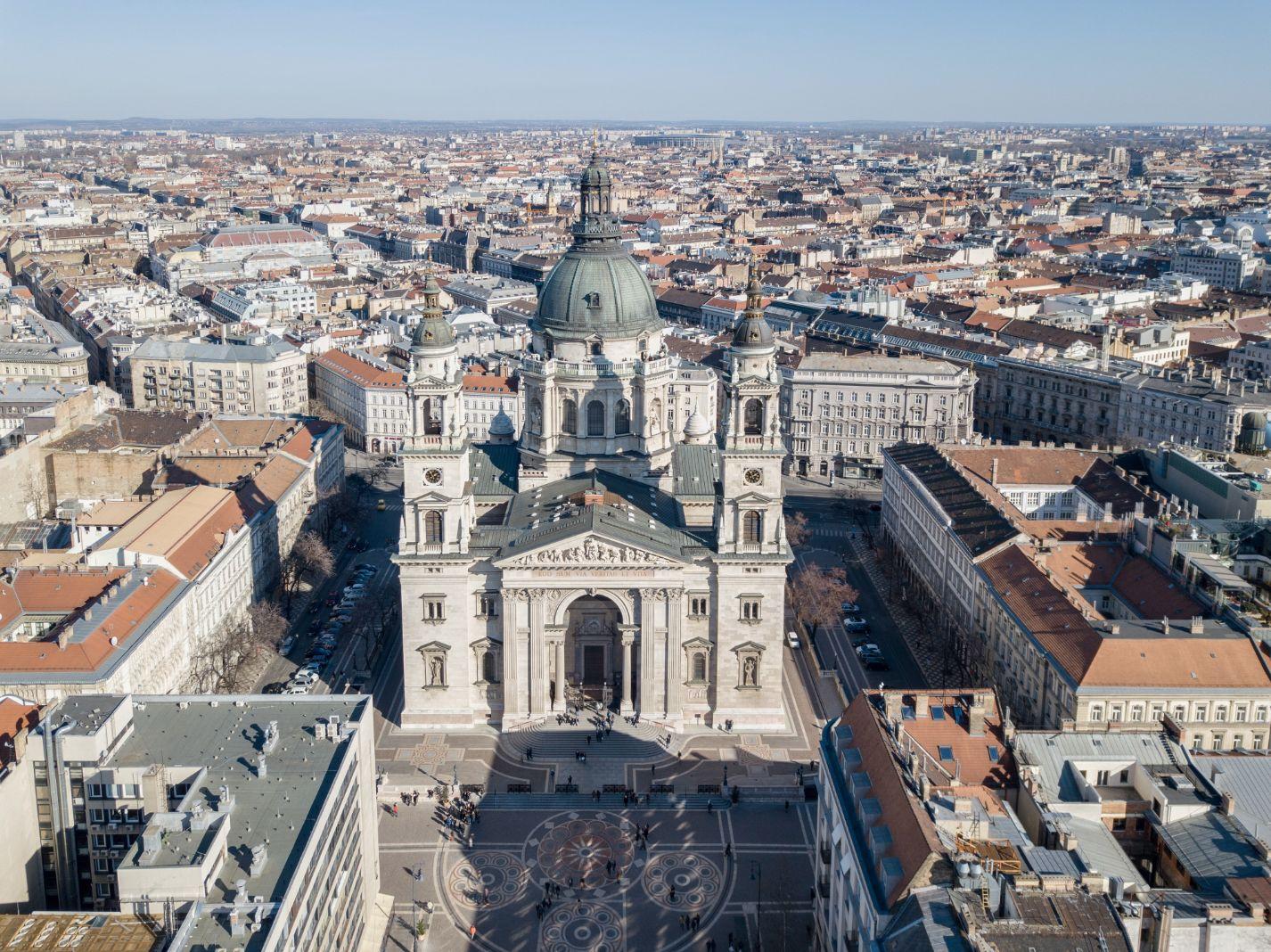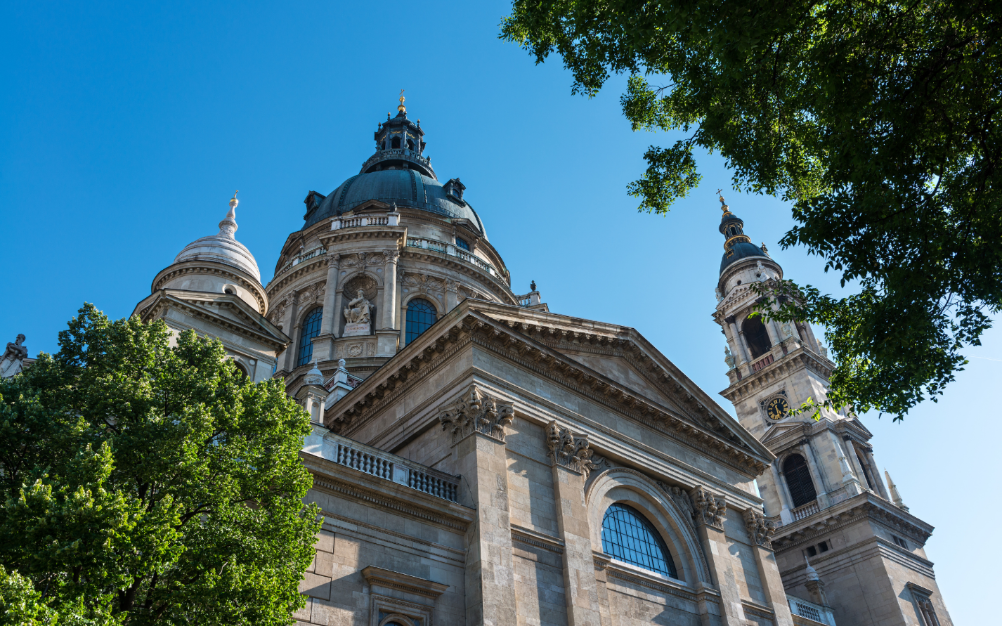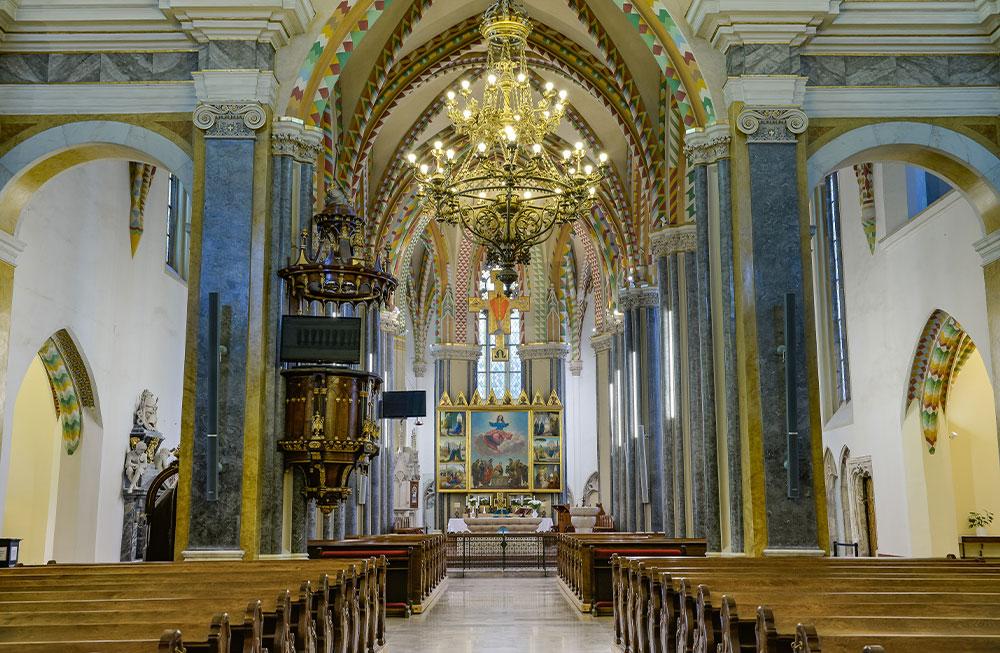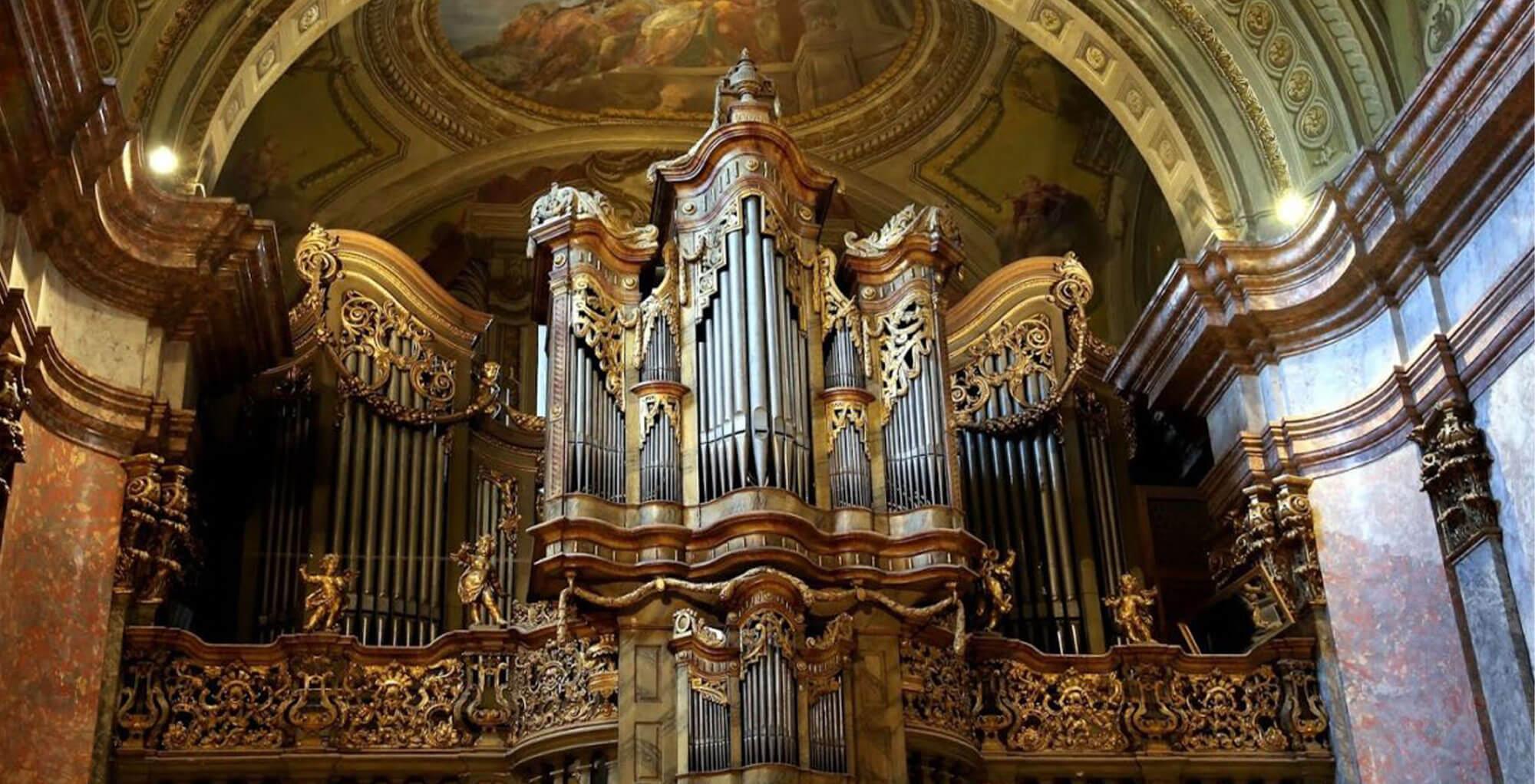The construction of the Basilica, which is the largest Roman Catholic church in Budapest, began in 1851 in the neoclassical style of the time, based on the plans of József Hild. However, a year after his death, the large dome collapsed due to poor-quality building materials and faulty construction. Work was continued by Miklós Ybl, who not only corrected the structural issues, but also reimagined the building in the spirit of the Renaissance. The church was consecrated in 1905, and the final keystone was later placed in the presence of Emperor Franz Joseph I.
The 20th century truly put the building to the test: first, it suffered major damage during the Siege of Budapest, then its dome caught fire during restoration works, and in the early 1980s, a severe storm tore off parts of its metal sheet covering. After twenty years of renovation, by 2003 not only had the building itself been restored, but all of its artworks – including mosaics, paintings, sculptures, and stained-glass windows – had been renovated as well.
A circular lookout terrace was added to the dome, and the building was also equipped with new decorative lighting. For over a decade, the square in front of the Basilica has hosted a Christmas fair during Advent, regularly voted one of the most beautiful in Europe. During this festive season, the façade is illuminated each evening with special light projections.
Mosaics, stained-glass windows, chandelier with a time capsule
But if you are passing by, don't just admire the church from outside! Step inside and notice how the ceiling and dome of the Basilica are ornamented with beautiful glass mosaics instead of frescoes. The larger of these were commissioned from the Salviati firm, which also decorated the St. Mark's Cathedral in Venice, while the smaller ones are the work of Miksa Róth, who created the decorative windows of the Hungarian Parliament. The basilica is also incredibly rich in fine art, with masterpieces by some of the greatest artists of its era adorning the interior. In addition to the altarpieces by Árpád Feszty and Gyula Benczúr, the interior is decorated by the life-size sculptures by János Fadrusz, Béni Ferenczy and Alajos Strobl, among others.
And if you enter to pray in the Chapel of St. Mary, look up at the chandelier made by the master ironsmith Nándor Páder, which hid a time capsule from 1899 for 115 years. During the chandelier's restoration a few years ago, a handwritten message enclosed in a paper cylinder slipped out of a hollow angel figurine and the brief note contained the names of the chandelier's makers.
Guardian of the Holy Right
Since 1897, the church has borne the name of the first Hungarian king, St. Stephen, who was buried in the basilica of Székesfehérvár in 1038. However, during the subsequent years of struggles for the throne, the mummified right arm—believed to have miraculous powers—was removed from the tomb, and taken to the Basilica’s treasury. According to legend, the treasury guard stole the relic and hid it on his estate in Bihar. It was only found in 1084, after King Stephen's canonisation. For many years, the Holy Right was kept in Transylvania, Dalmatia and Vienna. During the World War it was taken west for safekeeping, and in 1950 it was entrusted to the parish of the St. Stephen's Basilica in Budapest. The relic is now displayed at the altar of the Assumption, where it is kept in a glass container, in the safety of a double reliquary.
The first procession with the relic after World War II was led by Prince Primate József Mindszenty. This is commemorated by his bust to the right of the entrance. St. Teresa of Calcutta, who visited Hungary in 1986, also came to the church, met the gathered crowds, and prayed before the Holy Right. During his first pastoral visit to Hungary on 20 August 1991, Pope St. John Paul II met with the sick in this cathedral; his statue and relic are located near the building’s right entrance. The Dalai Lama has also visited, holding meetings here with Hungary’s religious leaders.
Despite the challenging conditions during its construction, the Basilica has become one of the most beautiful and significant ecclesiastical and tourist landmarks in our country.
Did you know?
St. Stephen's Basilica is the third largest church in Hungary, standing 96.3 metres tall—exactly the same height as the Parliament. Its bells are enormous, with the St. Stephen's bell, the largest in the country, weighing 9,250 kilograms and being rung every feast day from the right tower. The main dome is encircled by a 65-metre-high terrace, accessible by lifts, which is the highest lookout point in Pest, offering a unique 360-degree panorama of the entire city.
Download the free ChurchApp Esztergom-Budapest tour guide app and explore our historic churches and sacral collections! You can also use the app to discover the hidden curiosities of the churches on your own. The app and information are available in six languages.

